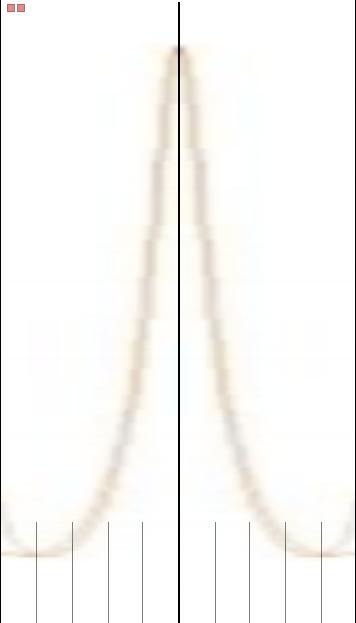*** Restricting New Posts to SD Premium Members ONLY *** (09 May 2025)
Just made a new account? Can't post? Click above.
Opinions On In Cylinder Waveform
- Ncautoshop
-
Topic Author
- Offline
- New Member
-

- Posts: 18
- Thank you received: 6
Vehicle in question is a 2011 F150 3.5L Ecoboost with a misfire in cylinder #2 - It is not ignition or carbon related. Fuel trims rich at idle, normal under load but vehicle has exhaust leaks (quoted). Relative injector flow shows cylinder two fluctuating during each test and the plug has more soot accumulation than others. Doing in cylinder testing and I noticed a slight difference, wondering what other's see here.
Please Log in or Create an account to join the conversation.
- Ncautoshop
-
Topic Author
- Offline
- New Member
-

- Posts: 18
- Thank you received: 6
Yes it is a snap on transducer. I may pull the valve cover on this one and take a look. I appreciate the input.Tyler wrote: For my info, is this a Snap On pressure transducer? Because it looks like there's some zeroing issues at work. :huh: Not that it changes the shape of the waveform.
The intake pocket on the misfiring cylinder is definitely too high. As on the known good one, the decompression and intake sections should achieve the same level of vacuum if everything is working correctly. The weak vacuum you're seeing makes me wonder about a possible worn cam lobe, or one of the intake valves stuck closed?
Sent from my SM-G955U using Tapatalk
Please Log in or Create an account to join the conversation.
- bruce.oliver
-

- Offline
- Elite Member
-

- Posts: 318
- Thank you received: 88
Please Log in or Create an account to join the conversation.
- bruce.oliver
-

- Offline
- Elite Member
-

- Posts: 318
- Thank you received: 88
Please Log in or Create an account to join the conversation.
- bruce.oliver
-

- Offline
- Elite Member
-

- Posts: 318
- Thank you received: 88
Please Log in or Create an account to join the conversation.
- juergen.scholl
-

- Offline
- Platinum Member
-

- Active partschanger
- Posts: 1230
- Thank you received: 462
bruce.oliver wrote: Look at the compression tower of the good cylinder. It is symmetrical. Now look at the compression tower of the bad cylinder, when the pressure drops as the piston moves down it's almost straight down instead of at the same angle. Then the vacuum pocket is lower because there is less air in the cylinder. Do a leak down test on that cylinder to find out where the air is going
I really can not see the bad cylinder's compression tower not being symetrical. Have a look at the attachments. The absolute compression also is very similar on both cylinders... If there was a considerable compression loss I would expect a difference in valve timing events with regards to peak compression between good and bad cylinder. This would be because in the bad cylinder the compression peak was not to take place at TDC but earlier due to the compression loss. Nevertheles both cylinders show the evo close to 60 degrees before BDC....
What I do see is a much lower exhaust pocket in comparison between the 2 cylinders and the points of the intake and exhaust valve openings are just onthe limit of what seems to be still within a normal range.....If you didn't deactivate the variable cam timing during your capture could you please redo the in cylinder pressure readings with the vvt system disabled?
Also if you could add a first look sensor reading of the intake vacuum or an ac-coupled map sensor reading in order to know what's going on in the intake and maybe identify a bad exhaust valve on number 2 pushing back into the intake manifold..
An expert is someone who knows each time more on each time less, until he finally knows absolutely everything about absolutely nothing.
Please Log in or Create an account to join the conversation.
- Ncautoshop
-
Topic Author
- Offline
- New Member
-

- Posts: 18
- Thank you received: 6
Leak down won't help us a manual compression test finds no issues. The dip and gradual climb in number two is what I noticed. I'll disable VVT once we get it back together from other repairs and pull this waveform. I'm fairly confident during these captures VVT was locked out due to the misfire.
Thanks for the input.
Please Log in or Create an account to join the conversation.
- Tyler
-

- Offline
- Moderator
-

- Full time HACK since 2012
- Posts: 6053
- Thank you received: 1523
Do you recall the compression numbers, specifically? I ask because I got surprised on a Ford 2.5L recently. Compression on the misfiring cylinder was only 10 PSI lower than others, but had nearly 50% leak down through an exhaust valve. :blink:
Please Log in or Create an account to join the conversation.
- bruce.oliver
-

- Offline
- Elite Member
-

- Posts: 318
- Thank you received: 88
Tyler wrote: I think bruce is right, the decompression pocket is much deeper on the misfiring cylinder. :blush: My bad!
Do you recall the compression numbers, specifically? I ask because I got surprised on a Ford 2.5L recently. Compression on the misfiring cylinder was only 10 PSI lower than others, but had nearly 50% leak down through an exhaust valve. :blink:
Im still new to this scope stuff especially in cylinder. But in the classes I have taken they said if the pocket on the decompression stroke is lower than the intake stroke then you have a leaking cylinder. A first look or transducer in the intake and crankcase will tell you where the loss is. I guess you could put it in the tail pipe to but it may be harder to see a change there since there is pressure in the exhaust. Again, I am new to this.lol Or a leakdown test.
Please Log in or Create an account to join the conversation.
- Tyler
-

- Offline
- Moderator
-

- Full time HACK since 2012
- Posts: 6053
- Thank you received: 1523
bruce.oliver wrote: Im still new to this scope stuff especially in cylinder. But in the classes I have taken they said if the pocket on the decompression stroke is lower than the intake stroke then you have a leaking cylinder. A first look or transducer in the intake and crankcase will tell you where the loss is. I guess you could put it in the tail pipe to but it may be harder to see a change there since there is pressure in the exhaust. Again, I am new to this.lol Or a leakdown test.
This is why I'm building another homemade FLS. :lol: And you're absolutely right about the decompression pocket.
Please Log in or Create an account to join the conversation.
- bruce.oliver
-

- Offline
- Elite Member
-

- Posts: 318
- Thank you received: 88
Tyler wrote: This is why I'm building another homemade FLS. :lol: And you're absolutely right about the decompression pocket.
Please share the build on the FLS. So you've made one before? The second going to be the same design?
Please Log in or Create an account to join the conversation.
- Tyler
-

- Offline
- Moderator
-

- Full time HACK since 2012
- Posts: 6053
- Thank you received: 1523
Now I'm using a (hopefully) more sensitive piezo disc, and integrating banana jacks so it's easy to hook up. Andy made a thread in the Tools section with the basic idea, if you're interested.
Please Log in or Create an account to join the conversation.
- Ncautoshop
-
Topic Author
- Offline
- New Member
-

- Posts: 18
- Thank you received: 6
This one was 115psi, we were between 110 and 115 in all cylinders. After reading in cylinder training transcripts, watching Pico videos and spending the better part of 4 hours researching this, it would seem that the deeper expansion pocket may be caused by a late opening exhaust valve - in turn effecting all the way to IVC and creating this "climb" - in all reality I don't think the in cylinder has given us enough data to suggest that compression issue is causing the misfire. I am concerned that with for instance if we had a worn cam lobe that vvt may worsen the condition, hence the intermittent nature of the misfire. I've decided we'll put an injector in it - that's one thing that I have data to confirm is abnormal. May have the tech pull the valve cover at the same time.Tyler wrote: I think bruce is right, the decompression pocket is much deeper on the misfiring cylinder. :blush: My bad!
Do you recall the compression numbers, specifically? I ask because I got surprised on a Ford 2.5L recently. Compression on the misfiring cylinder was only 10 PSI lower than others, but had nearly 50% leak down through an exhaust valve. :blink:
Sent from my SM-G955U using Tapatalk
Please Log in or Create an account to join the conversation.
- Ncautoshop
-
Topic Author
- Offline
- New Member
-

- Posts: 18
- Thank you received: 6
Sent from my SM-G955U using Tapatalk
Please Log in or Create an account to join the conversation.
- bruce.oliver
-

- Offline
- Elite Member
-

- Posts: 318
- Thank you received: 88
Please Log in or Create an account to join the conversation.
- Ncautoshop
-
Topic Author
- Offline
- New Member
-

- Posts: 18
- Thank you received: 6
Leak down test had minimal leakage. Compression is good. I found information from 3 or 4 separate sources stating a late opening exhaust valve would cause a deep pocket. I'm honestly not sure, as I mentioned in New at in cylinder waveform analysis.bruce.oliver wrote: Do a leak down test. The exhaust valve opening late isn't going to cause that deep decompression pocket
Sent from my SM-G955U using Tapatalk
Please Log in or Create an account to join the conversation.


